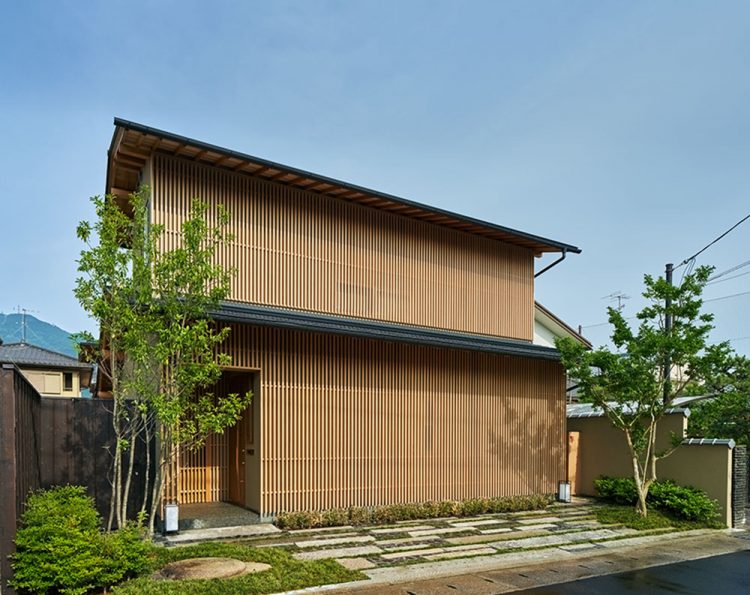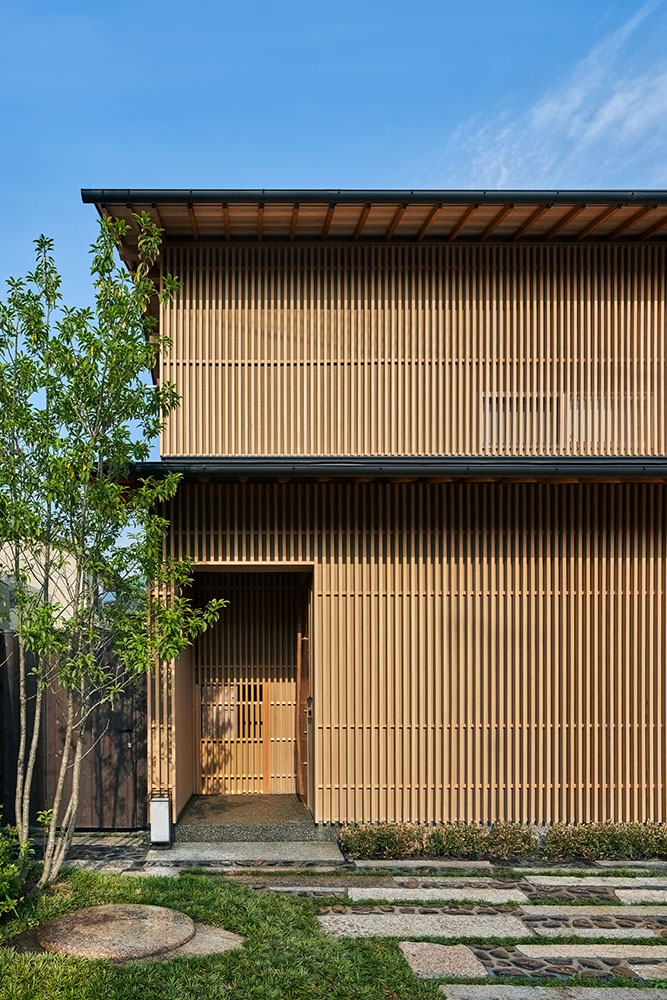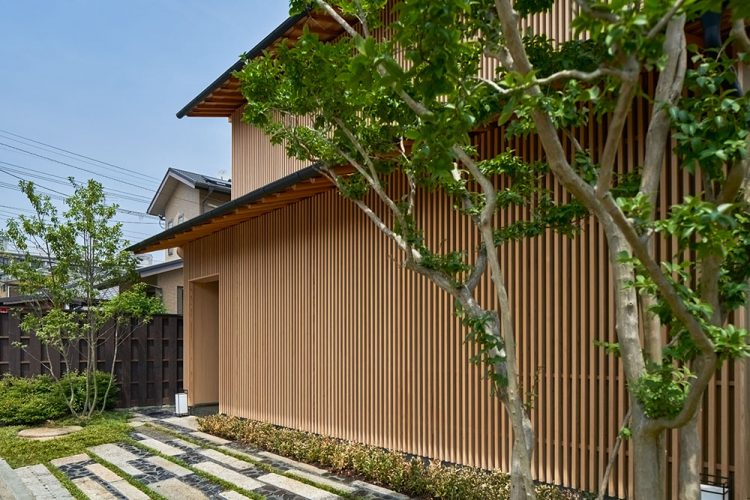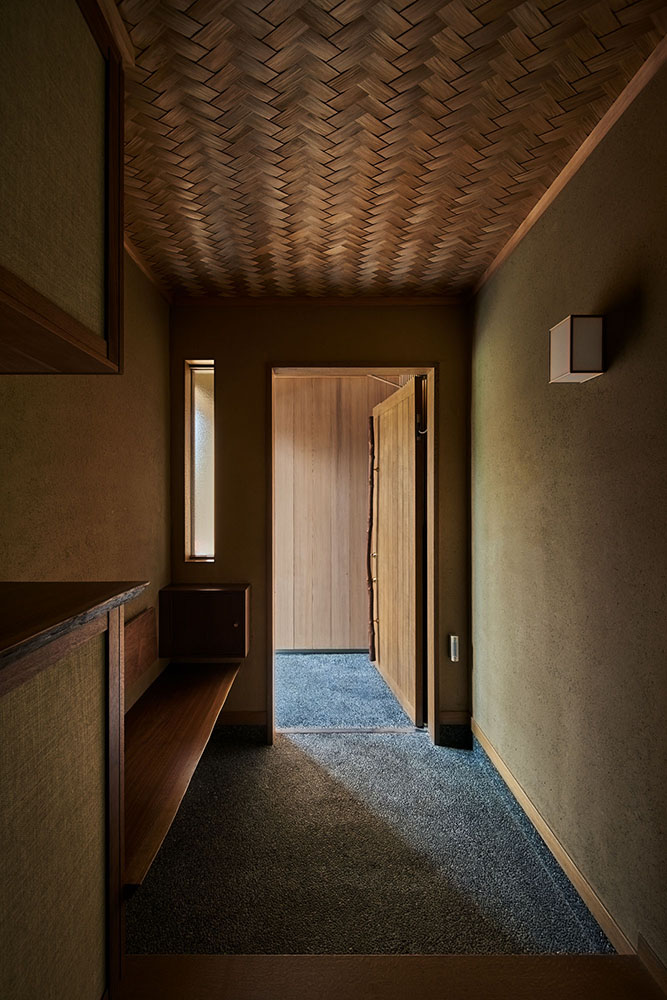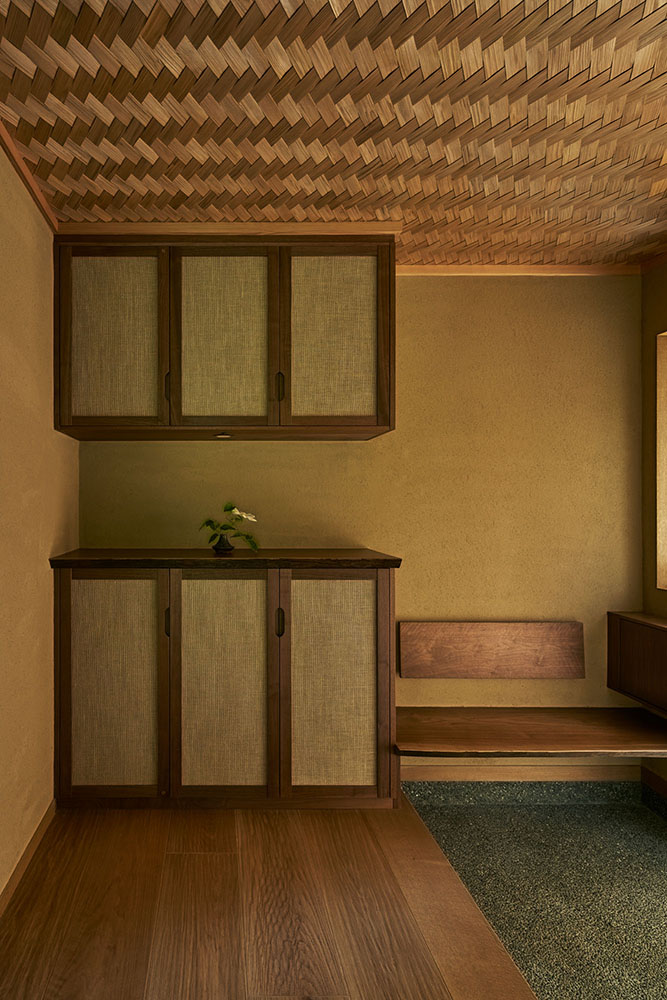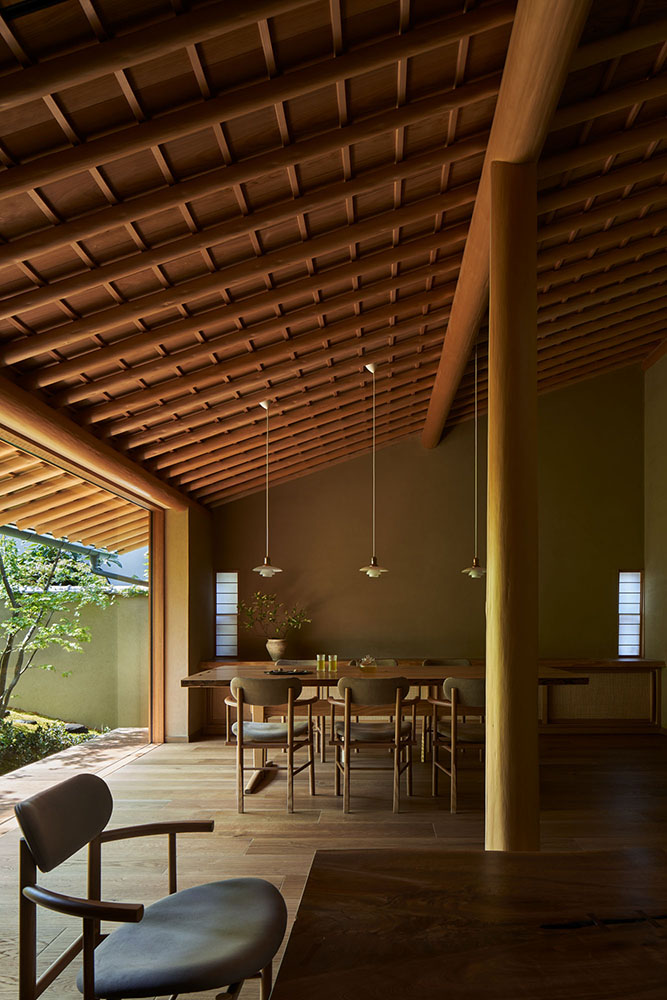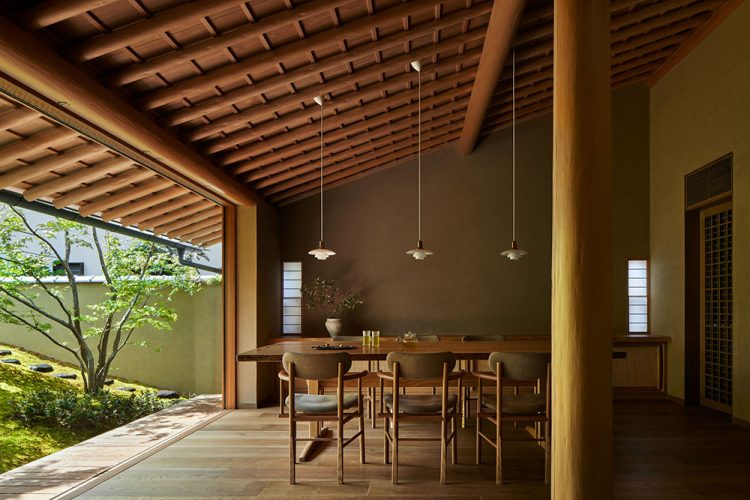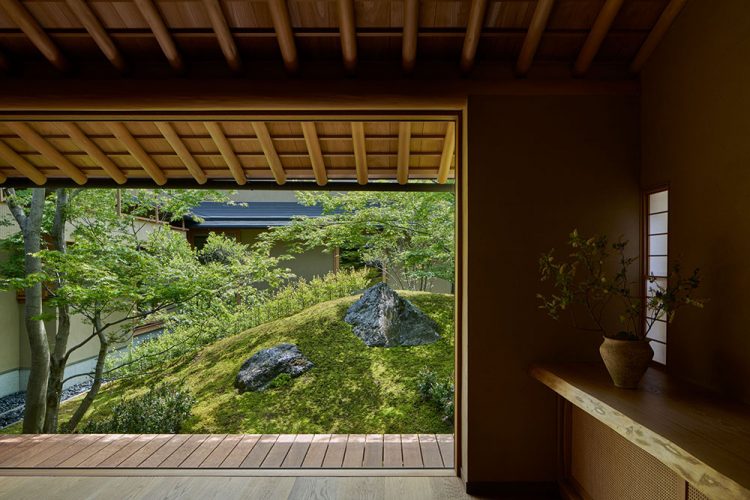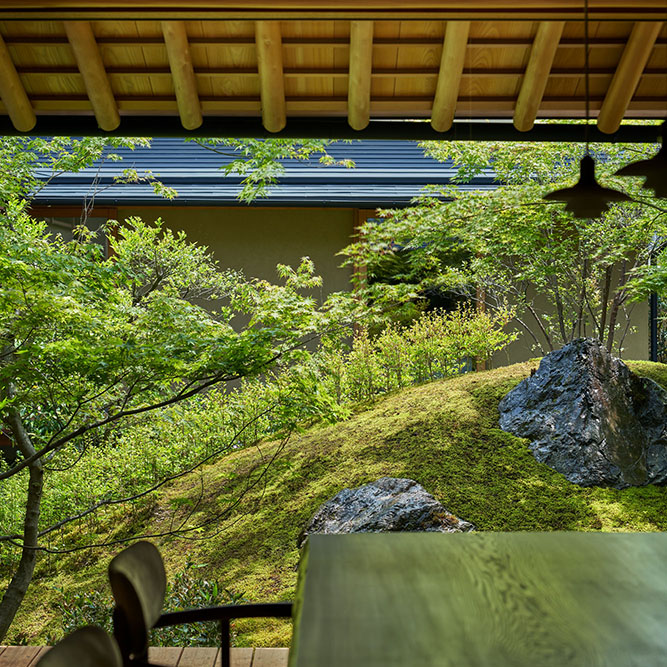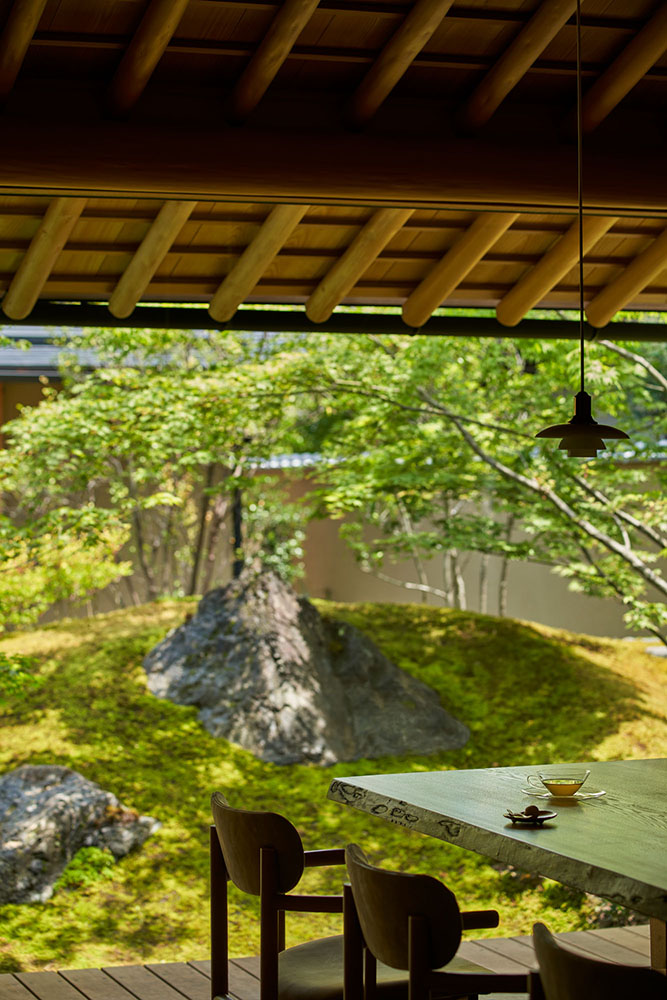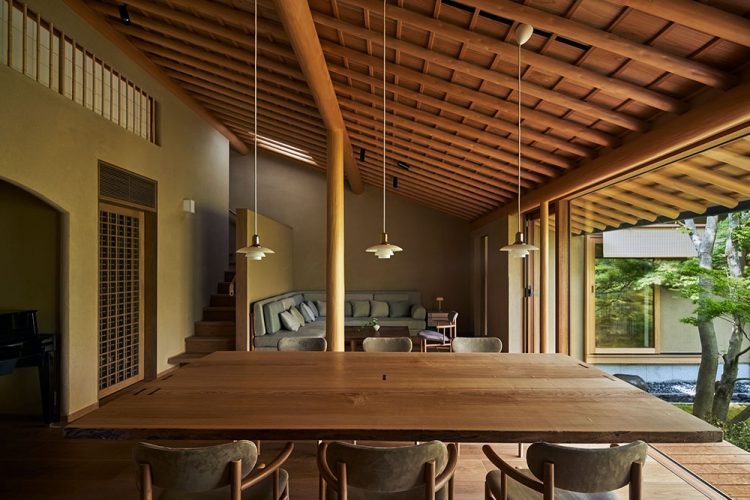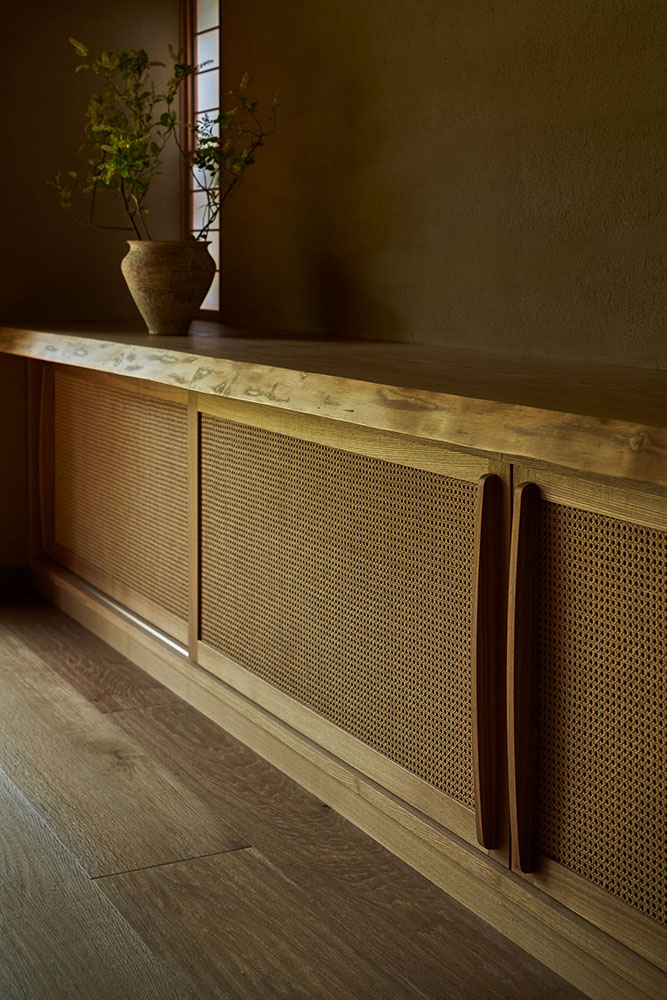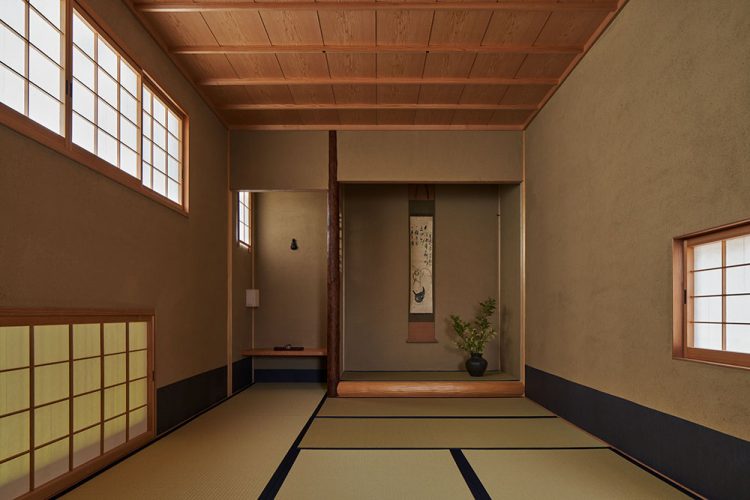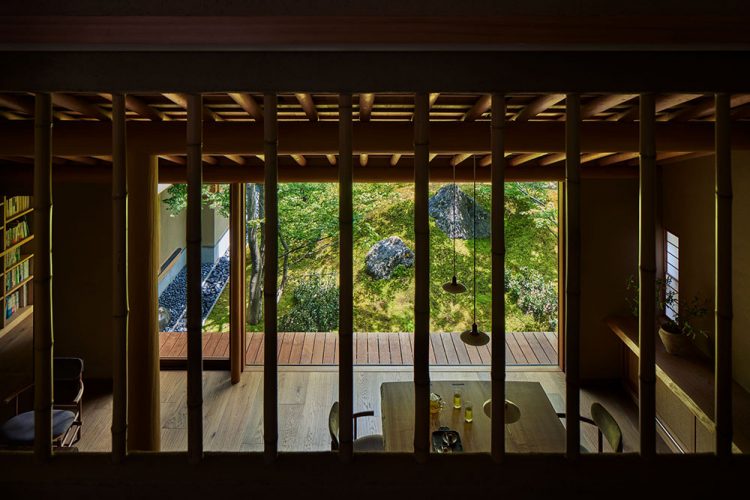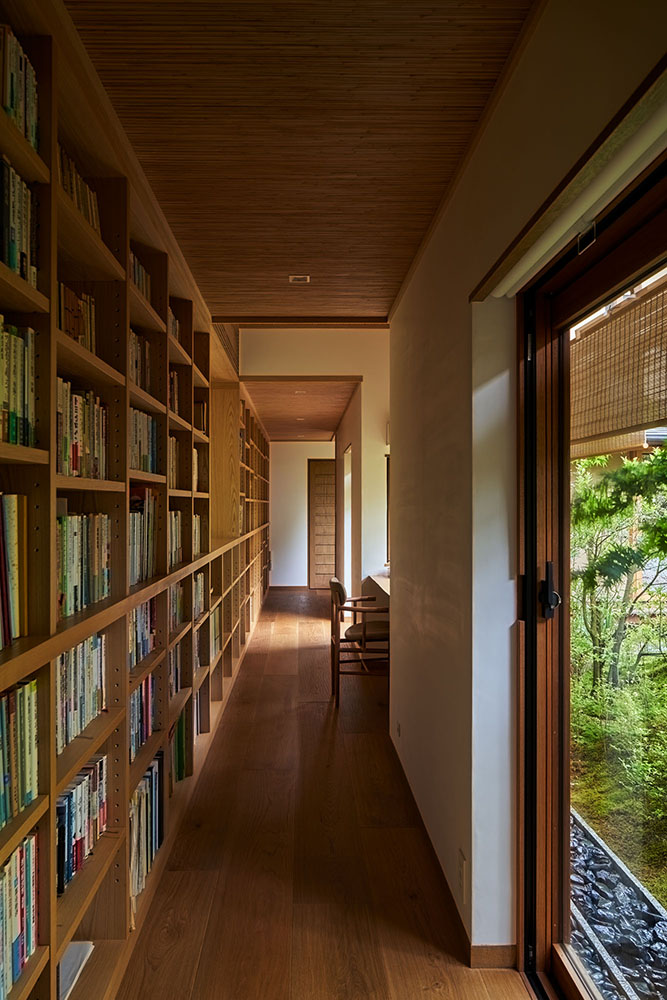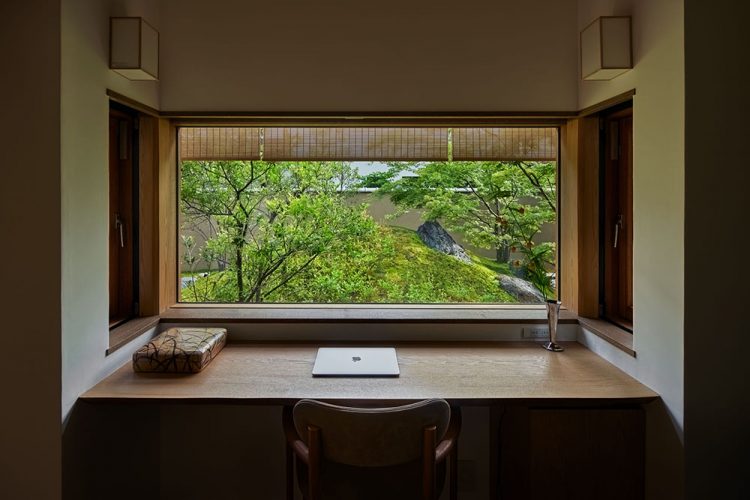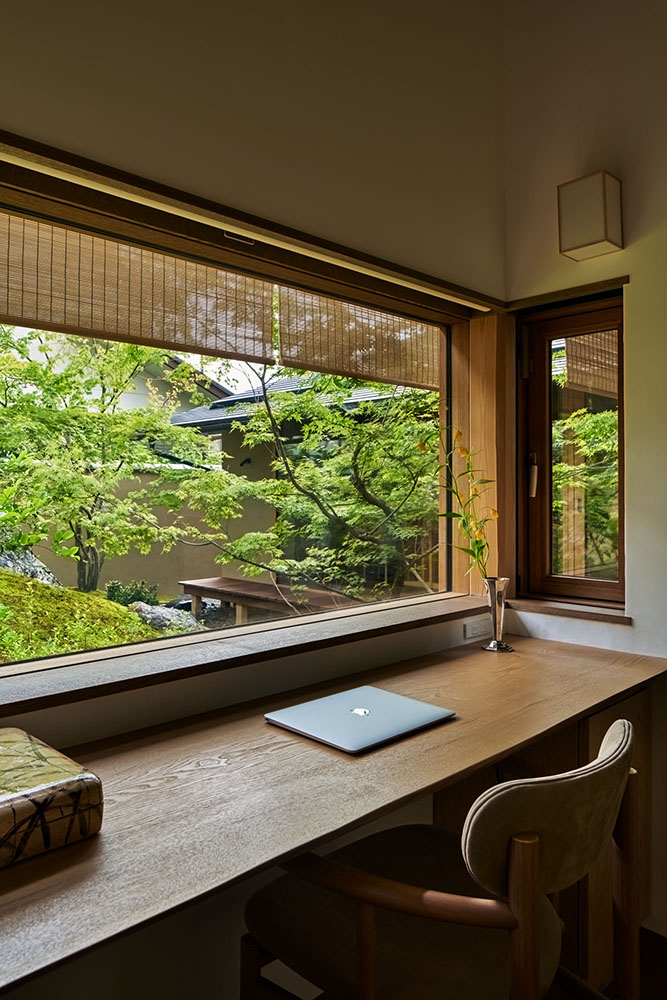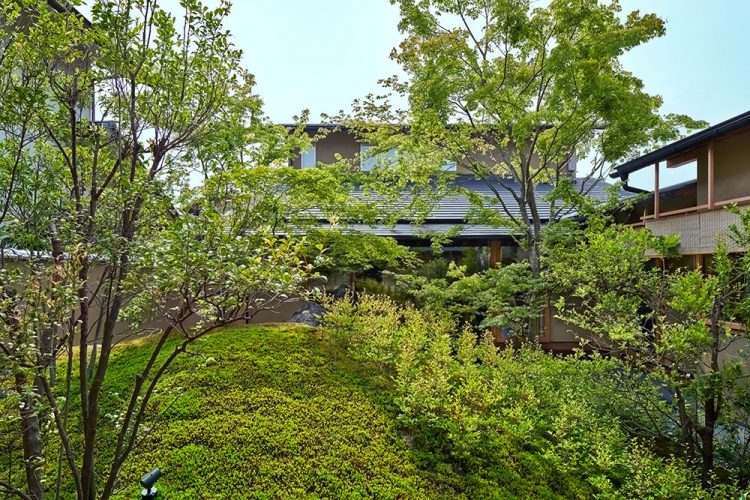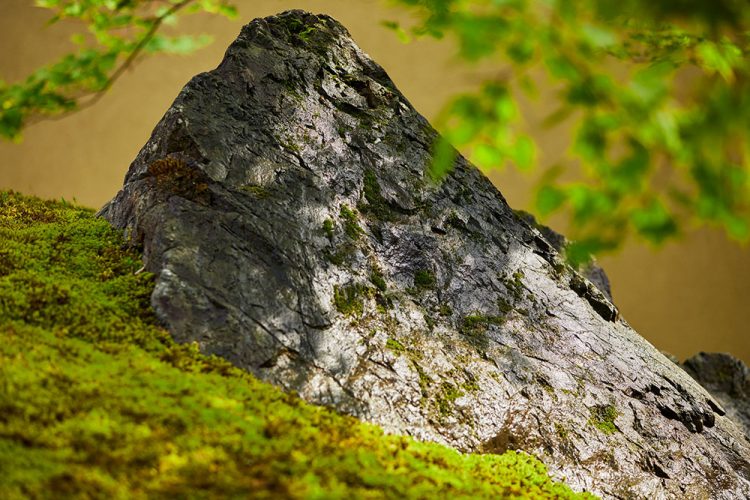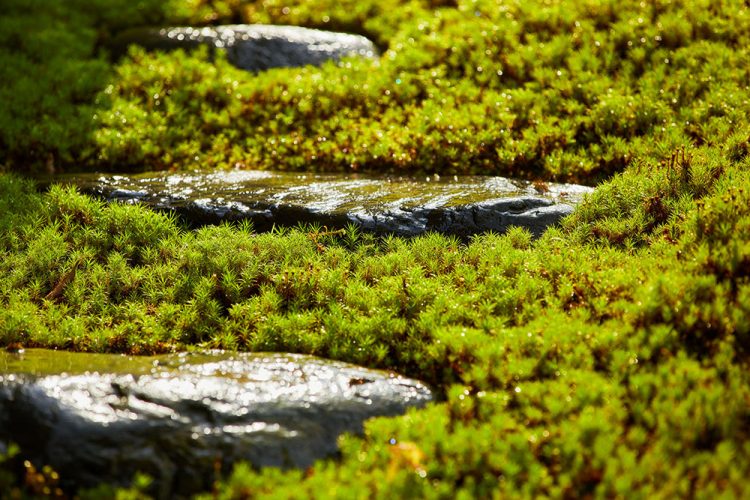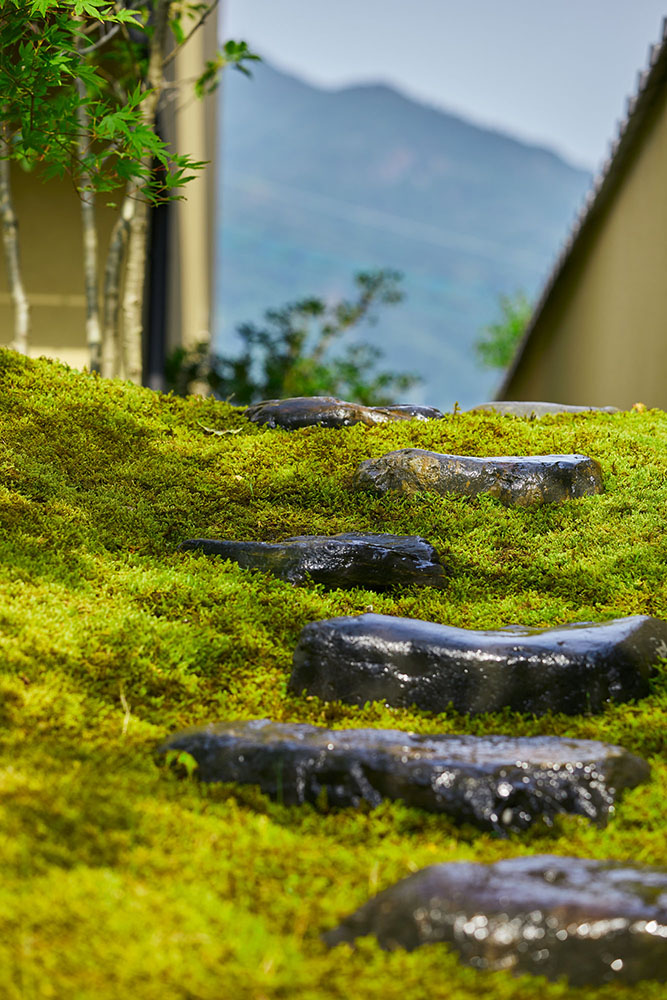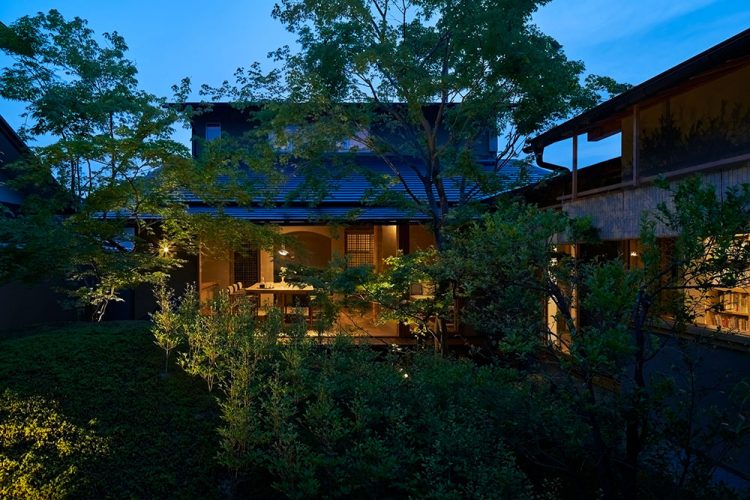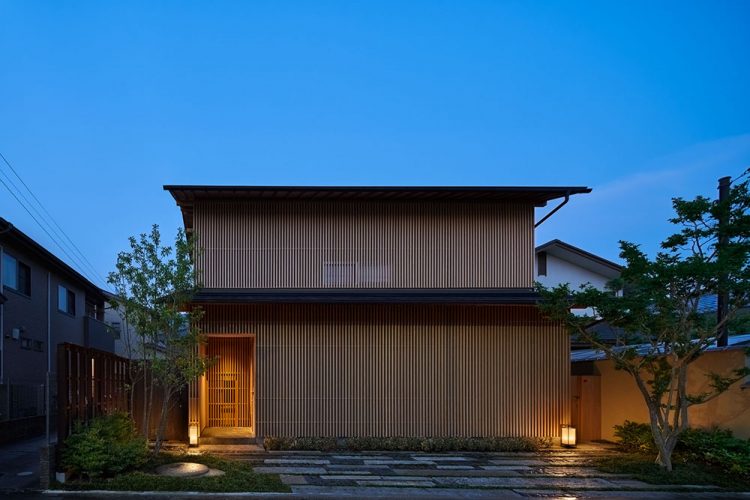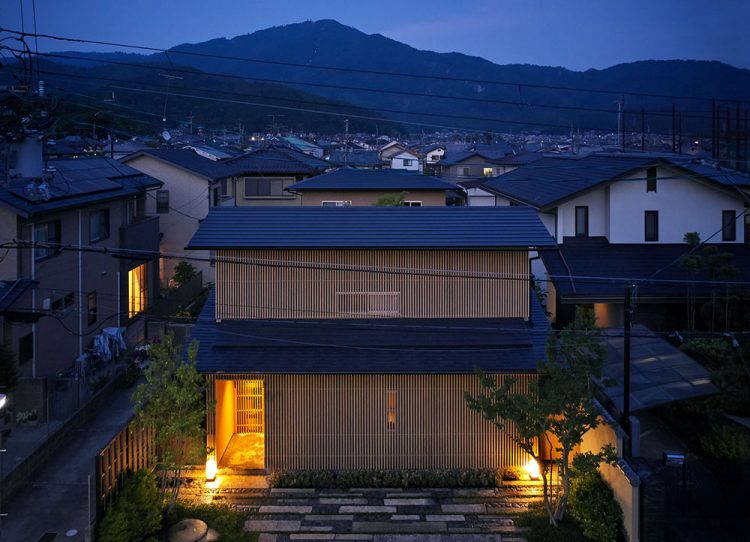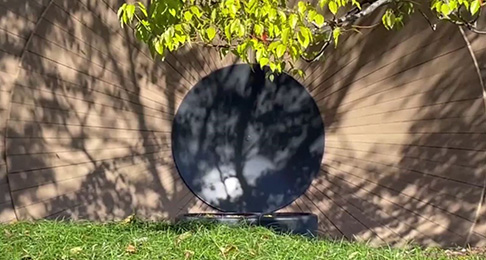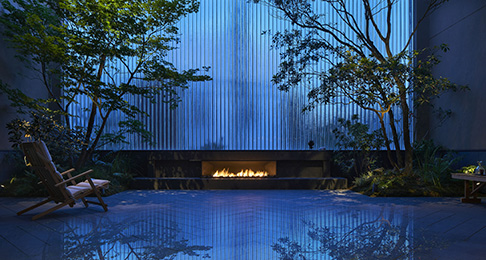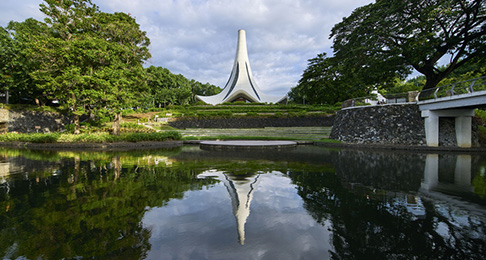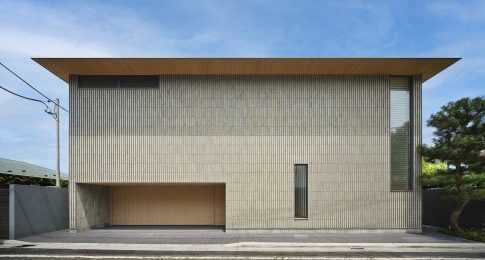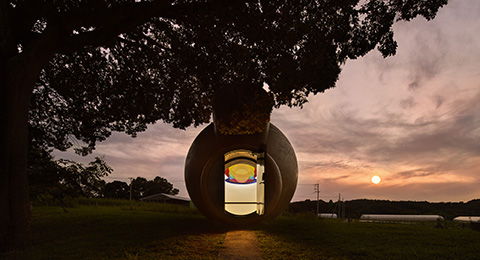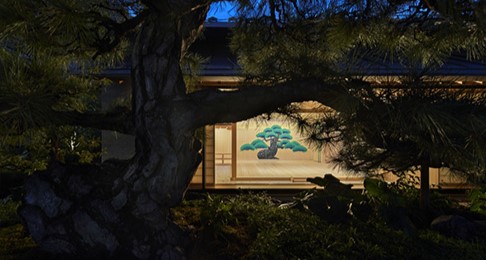House of the Sacred Rock
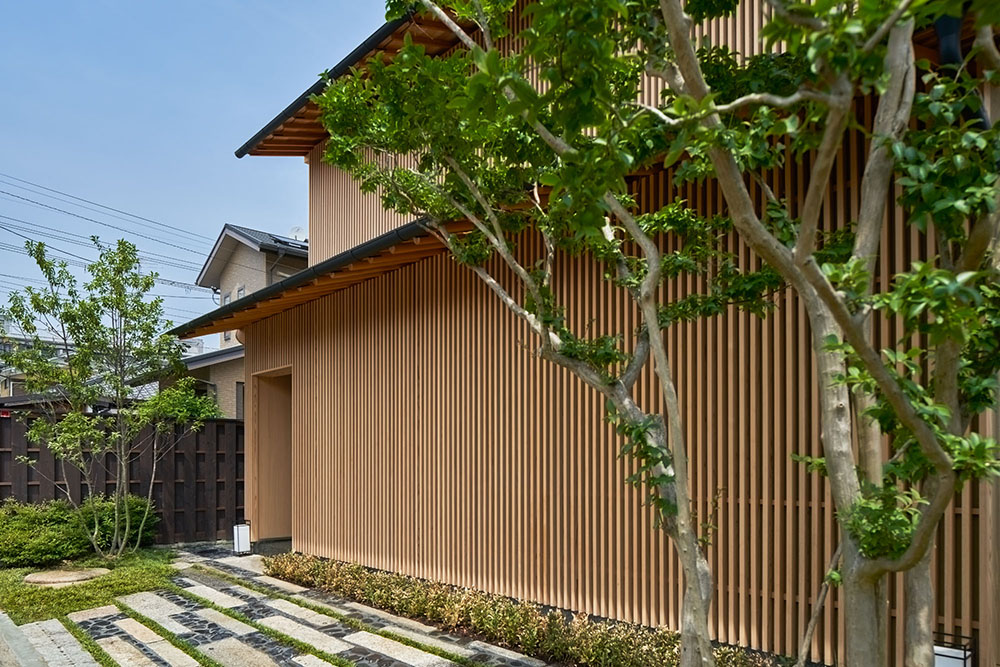
Many distinct remnants of mountain worship are still much evident in northern Kyoto, where Yamazumi Shrine, which deifies a rock where a mountain god descends and dwells, and many temples with garden that harness the scenery of Mt. Hiei and worship it from afar exist. The people who live in this area today also admire and look to Mt. Hiei to read weather and seasonal changes. Hence, we decided to create a garden and space that draw the sensibility and behavior of the people in this region toward the mountain.
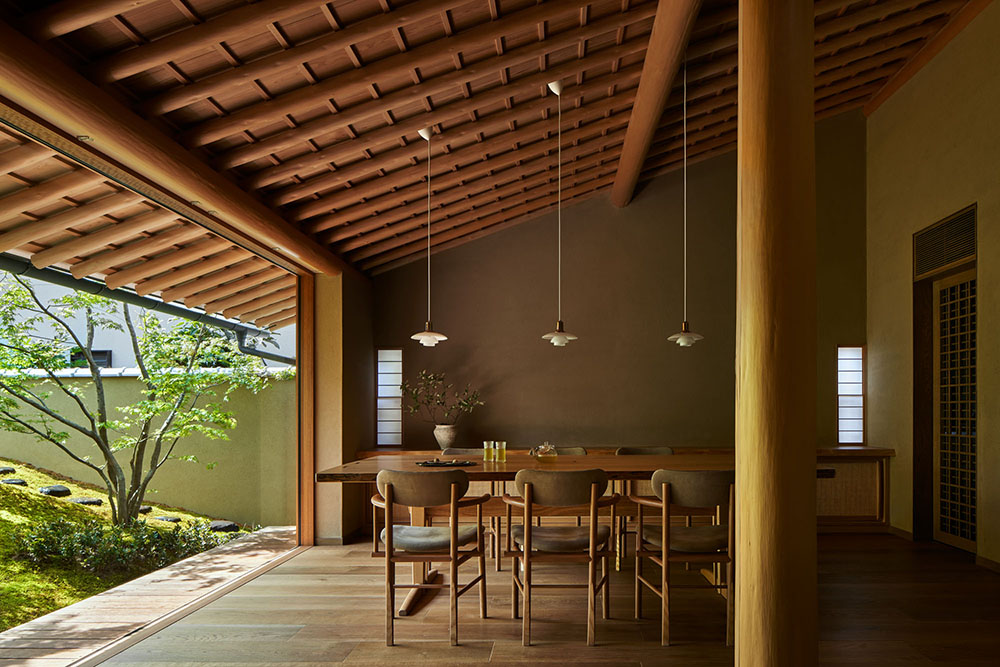
As the site is located in a densely residential area, we provided views and sunlight for each room through a courtyard. A mound was created using the soil excavated for the foundation to prevent the bedrooms and dining room from viewing each other, and also to reflect sunlight into each room. In the center of the garden, a sacred rock where a god dwells was dedicated. While the rock has a very material presence, it also has transcendency as a sacred space.
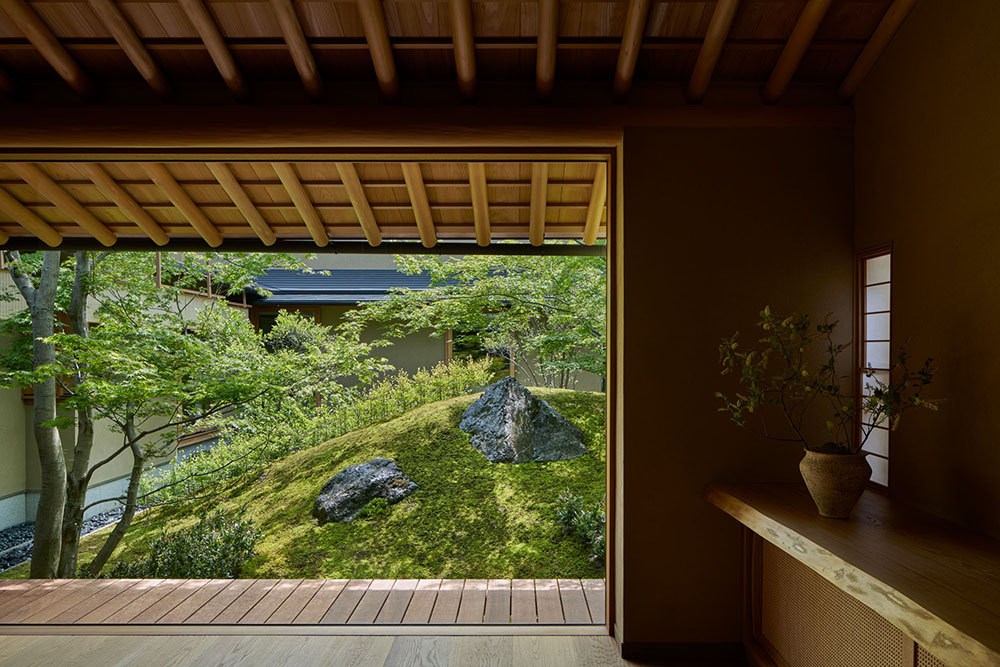
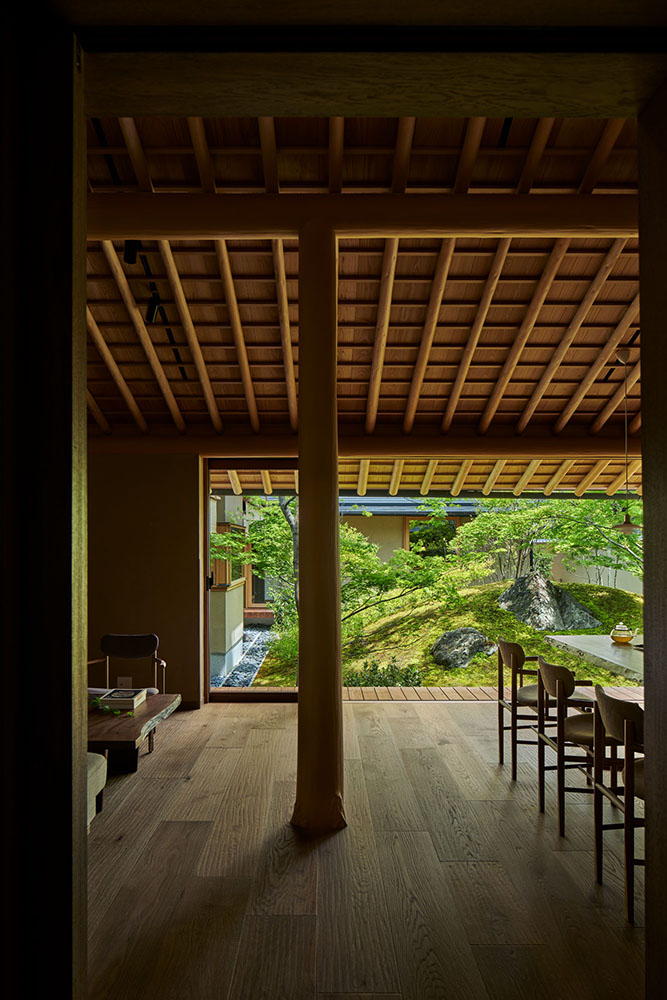
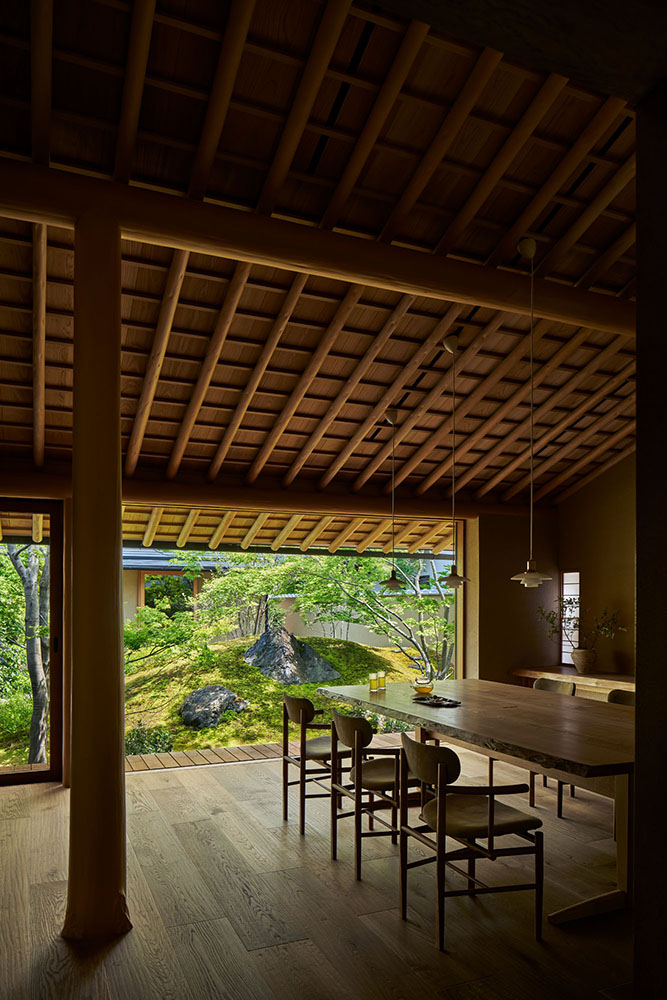
With the sacred rock in the center, the garden thus became a modeled scenery of Mt. Hiei.Plants of smaller scale such as haircap moss, enkianthus perulatus, and ruscus bamboo provide additional depth to the perspective. Also, by increasing density of the garden below the eye level when sitting, we elicit the behavior of lowering eyelids to have the eyes half-closed. This is the natural eye level when practicing seated Zen meditation and a state of contemplating the inside of one’s mind and outside world simultaneously. When opening the entrance hall door that leads to the living-dining room, a cedar log with partial roots standing straight and just slightly to the left of the center, drawing you to the sacred rock on the right.
When the log rafters made of Kitayama cedar trees that descend like eyelashes synchronize with half-closed eyes, time and space instantly warp. The Japanese maple transforms to clouds, the cedar moss to a cedar forest, and one transcends scale to float in the sky above Mt. Hiei. As a place for spirits to travel to, mountains are thought to be the Pure Land in Buddhism and Mandala in mountain asceticism-shamanism. As the origin of garden is said to be a place for worship, the garden embodies a virtual experience aiming for such world, a landscape of peace characterized by enlightenment and nirvana.
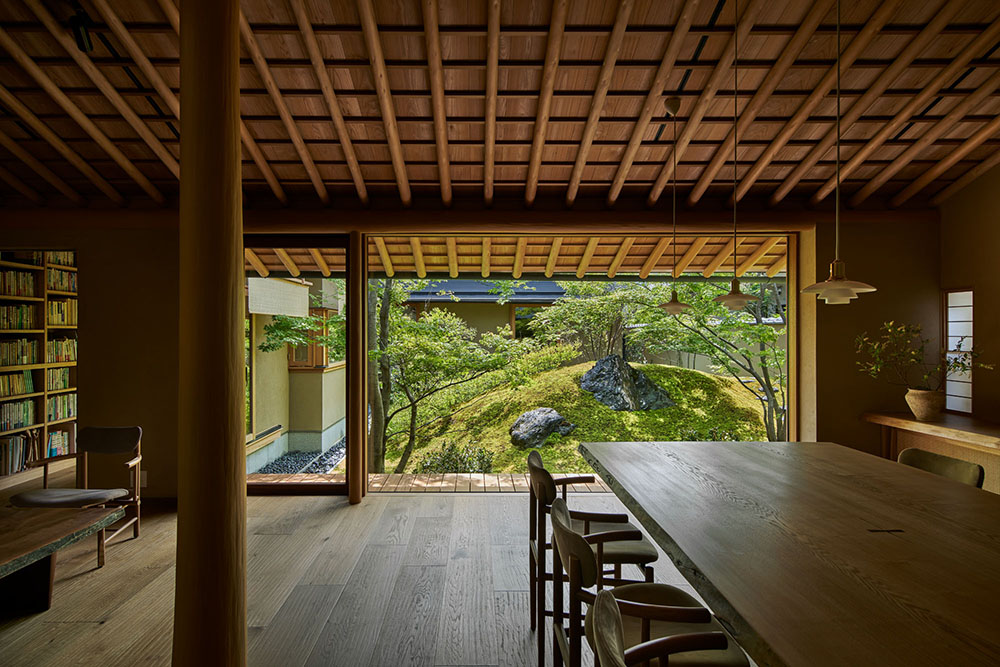
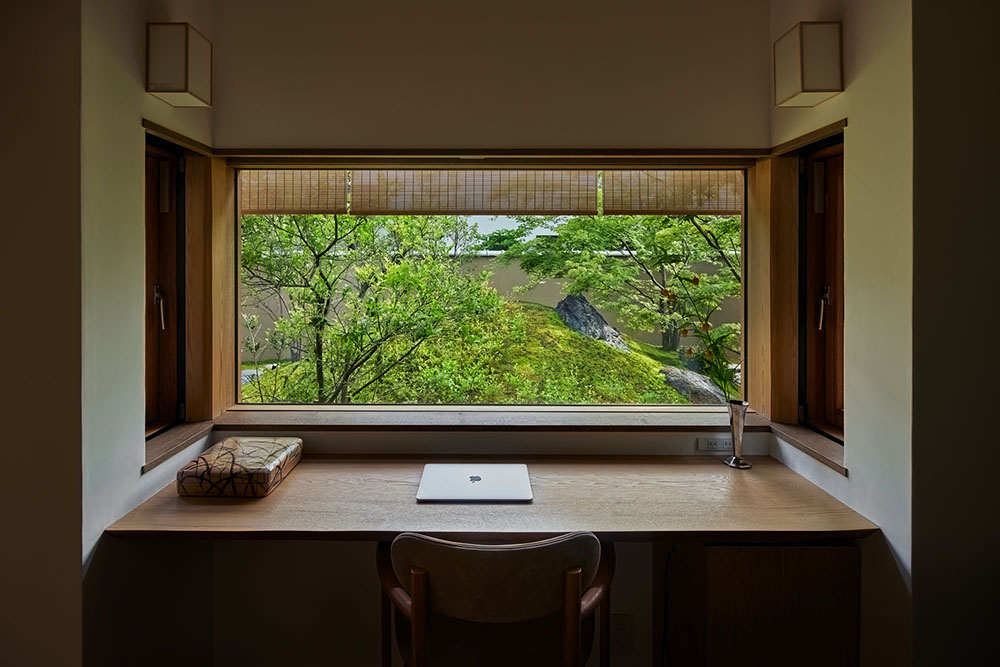
A study in the corridor facing the courtyard.
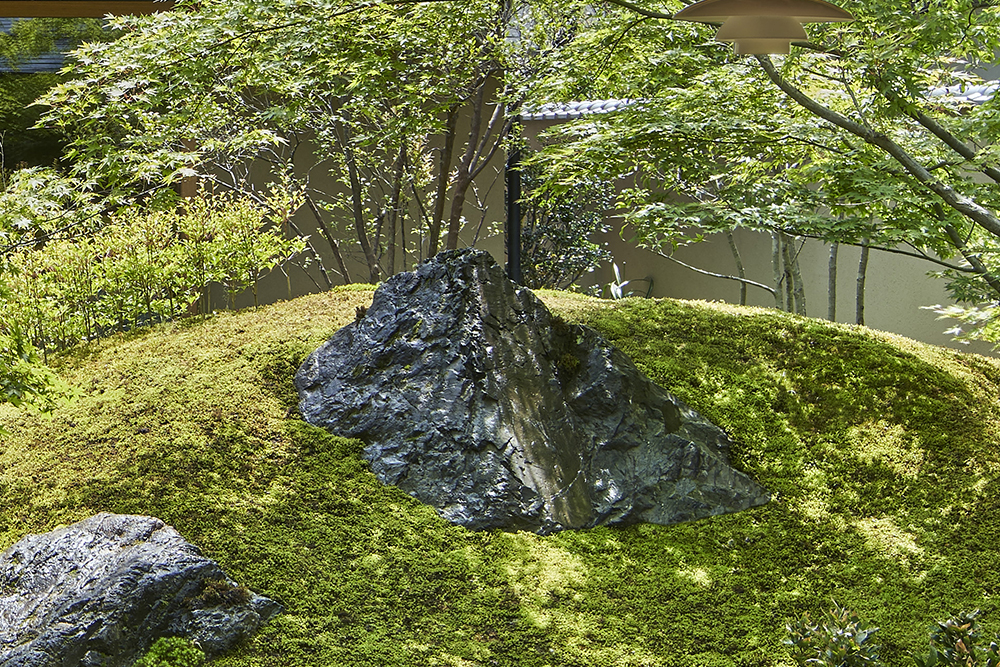
Sacred rock of scepter stone. The trees are planted like a forest with small leaves and bonsai style.
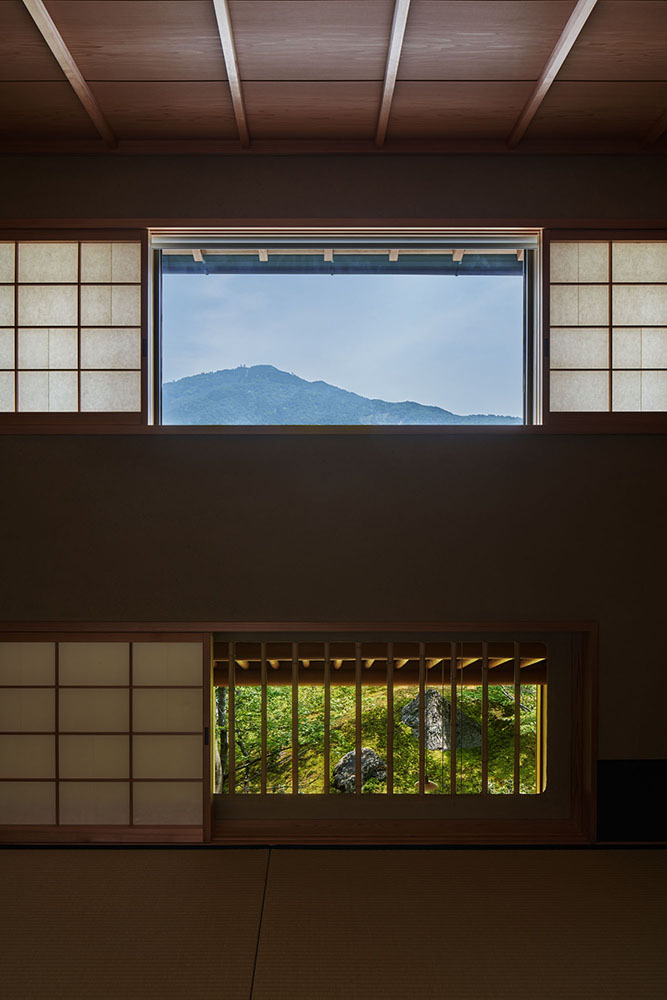
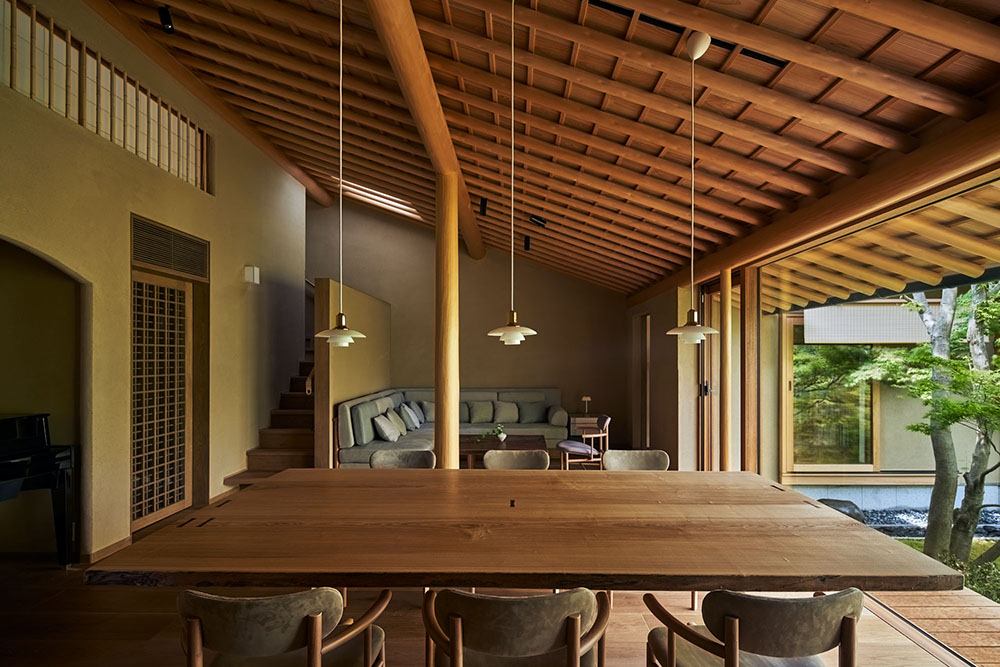
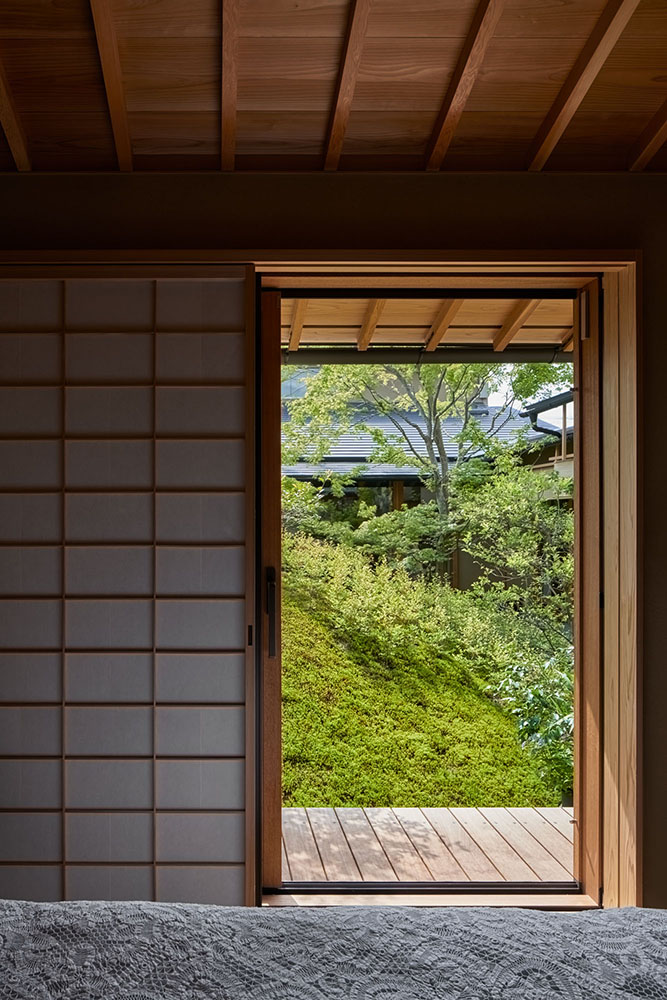
Tsukiyama diffuses light into each room facing the courtyard.
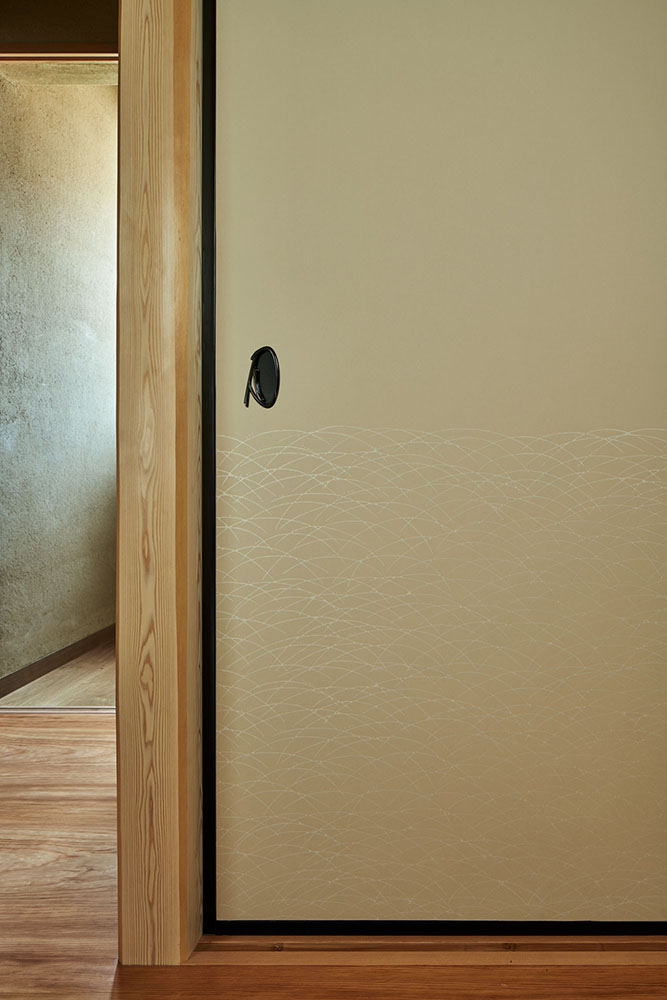
I used Kyoto karakami paper to recreate the scene of the moon rising out of the susuki field that once covered this area.
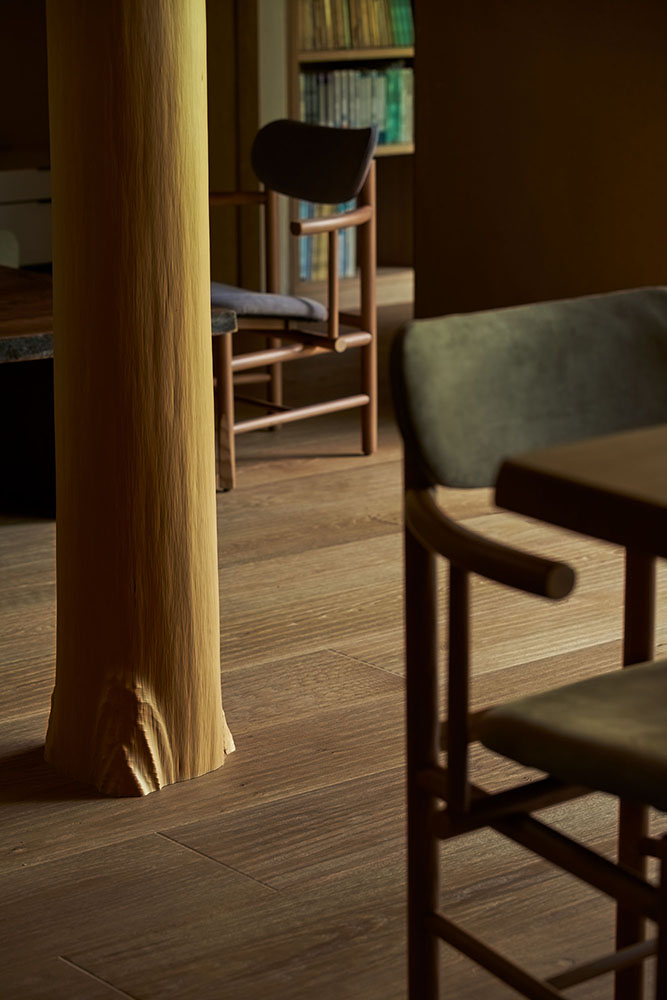
The main pillar is made of rooted Kitayama cedar logs standing upright on the ground.
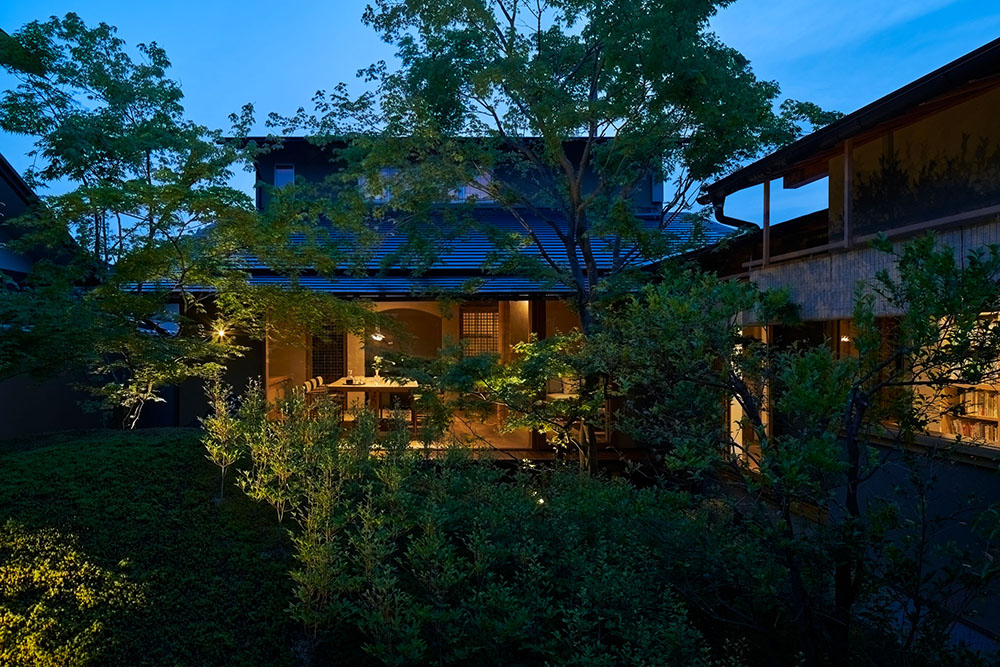
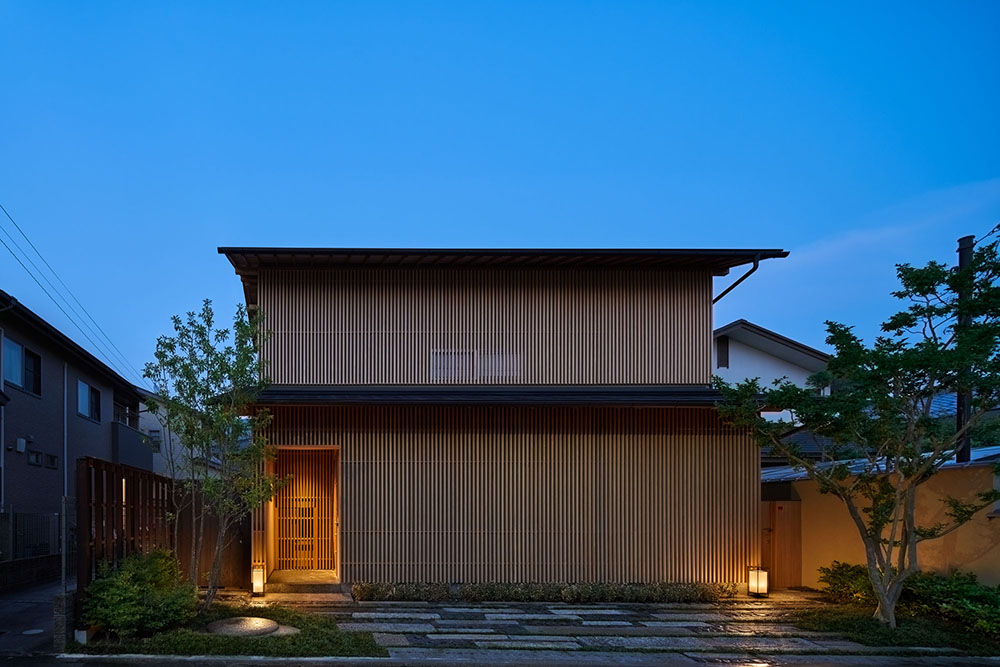
- Completion
- 2020.02
- Principal use
- Residence
- Structure
- Timber
- Site area
- 303m2
- Total floor area
- 175m2
- Building site
- Kyoto
- Contractor
- Takeda Komuten
- Team
- Kunihiko Miyachi, Shinya Tani, Takahito Haneda
